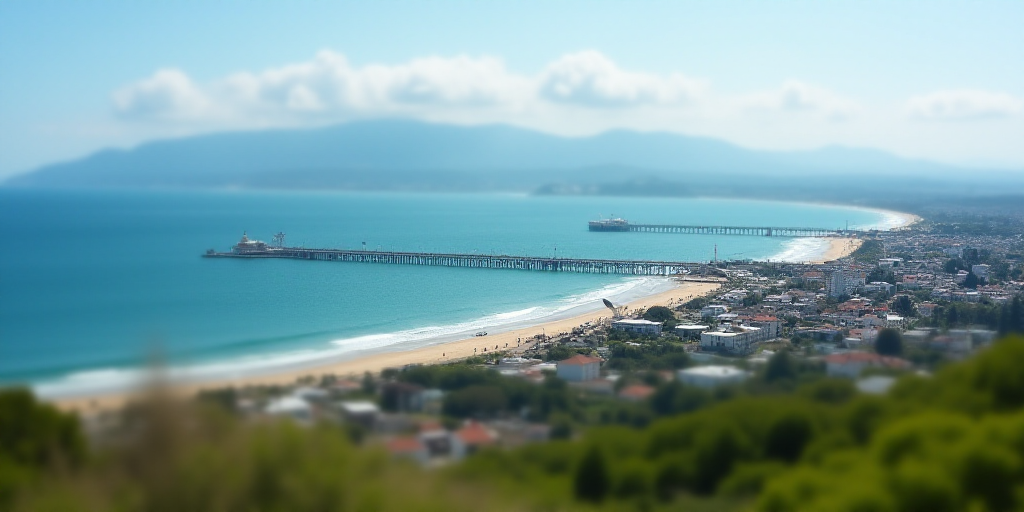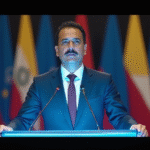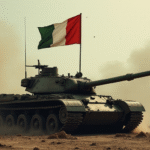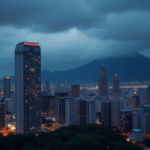Alert Liftoff After Powerful Earthquake in Russia
More than a dozen countries, including Japan, the United States, Ecuador, Mexico, and Colombia, warned their populations to stay away from coastal areas following a powerful earthquake in Russia, one of the strongest ever recorded.
The Earthquake Details
The magnitude 8.8 quake struck on Wednesday morning (23:24 GMT on Tuesday) at a depth of 20.7 kilometers, approximately 126 kilometers off the coast of Petropavlovsk-Kamchatski, the capital of Russia’s Kamchatka Peninsula, according to the United States Geological Survey (USGS).
Widespread Disruptions and Evacuations
The tsunami warning, predicting up to four-meter high waves in certain Pacific regions, caused widespread disruptions. Peru closed 65 of its 121 Pacific ports, and Maui authorities canceled flights to and from the Hawaiian island.
Japan’s Fukushima nuclear power plant, devastated by a massive earthquake and tsunami in 2011, was shut down as a precaution.
Relief and Return to Normalcy
Fortunately, no major disasters occurred, and countries gradually lifted or downgraded their warnings, allowing millions of evacuees to return home.
Japan’s Experience
Initially, Japan issued an evacuation alert for nearly 2 million people. The alert was lifted Wednesday night.
The only reported fatality was a woman who died after her car plunged down a cliff in Japan while attempting to escape.
Chile’s Response
Chilean authorities evacuated 1.4 million people from coastal areas, described as “the largest evacuation” in the country so far, according to the Interior Ministry.
On Rapa Nui Island, a Chilean territory about 3,500 km from the mainland and home to around 7,000 residents, tsunami waves reached up to 70 centimeters.
In Ecuador’s Galapagos Islands, about 1,000 km from the mainland and where three-meter waves were anticipated, relief came when the Ecuadorian Navy’s Oceanography Institute declared that the threat had passed.
Local residents reported that the sea level dropped and then rose suddenly, a common phenomenon with tsunamis. However, only one wave of about one meter was recorded, causing no damage.
“We’re all calm, back at work. Restaurants have reopened, and tourist spots are open again,” said Isabel Grijalva, a 38-year-old resident of Santa Cruz, one of the islands in the archipelago.
Russia’s Impact
The most significant damage was reported in Russia, where a tsunami flooded the port of Sévero-Kurilsk in the Kuril Islands, about 350 km from the earthquake’s epicenter, submerging the local fish plant.
Television images showed buildings and debris being swept away from the coast into the sea.
“Luckily, we had prepared a bag with water and clothes near the door. We grabbed it quickly… It was terrifying,” a Kamchatka resident told the Russian state media Zvedza.
The wave reached as far as the city’s Second World War monument, about 400 meters from the coast, according to Mayor Alexander Ovsiannikov.
The initial quake caused limited damage and only minor injuries, despite being stronger than the 2011 Japan quake (magnitude 9.1) that triggered a tsunami killing over 15,000 people.
Volcanic Eruption
Russian scientists reported that the Klyuchevskoy volcano erupted shortly after the quake.
“Lava flowing down the western slope in fiery red is visible. A strong glow and explosions are perceptible over the volcano,” stated the Russian Geophysical Service.
The initial quake, the strongest in the Kamchatka region since 1952, was followed by at least six aftershocks that further shook eastern Russia, including a magnitude 6.9 quake.
The USGS noted a 59% probability of a magnitude-over-7.0 aftershock within the next week.
Key Questions and Answers
- What was the cause of the alerts? A powerful earthquake in Russia triggered tsunami warnings across the Pacific.
- Which countries issued evacuation warnings? More than a dozen countries, including Japan, the United States, Ecuador, Mexico, and Colombia, warned their populations to stay away from coastal areas.
- What was the magnitude of the earthquake? The quake registered a magnitude of 8.8.
- Were there any major disasters or fatalities? Fortunately, no significant damage or widespread fatalities occurred.
- How did Russia get affected? The tsunami caused flooding in the port of Sévero-Kurilsk, submerging a local fish plant. The initial quake also triggered the Klyuchevskoy volcano’s eruption.






